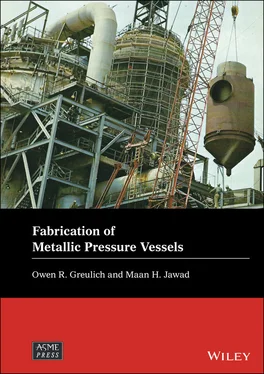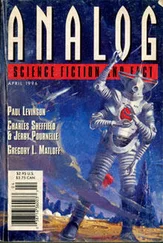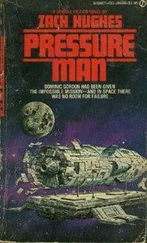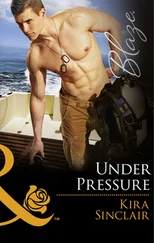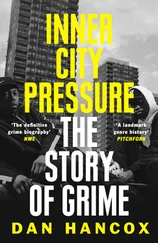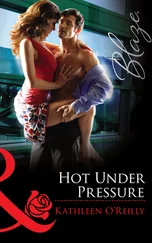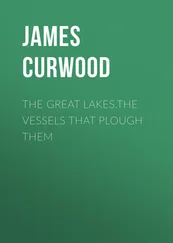Maan H. Jawad - Fabrication of Metallic Pressure Vessels
Здесь есть возможность читать онлайн «Maan H. Jawad - Fabrication of Metallic Pressure Vessels» — ознакомительный отрывок электронной книги совершенно бесплатно, а после прочтения отрывка купить полную версию. В некоторых случаях можно слушать аудио, скачать через торрент в формате fb2 и присутствует краткое содержание. Жанр: unrecognised, на английском языке. Описание произведения, (предисловие) а так же отзывы посетителей доступны на портале библиотеки ЛибКат.
- Название:Fabrication of Metallic Pressure Vessels
- Автор:
- Жанр:
- Год:неизвестен
- ISBN:нет данных
- Рейтинг книги:4 / 5. Голосов: 1
-
Избранное:Добавить в избранное
- Отзывы:
-
Ваша оценка:
- 80
- 1
- 2
- 3
- 4
- 5
Fabrication of Metallic Pressure Vessels: краткое содержание, описание и аннотация
Предлагаем к чтению аннотацию, описание, краткое содержание или предисловие (зависит от того, что написал сам автор книги «Fabrication of Metallic Pressure Vessels»). Если вы не нашли необходимую информацию о книге — напишите в комментариях, мы постараемся отыскать её.
A comprehensive guide to processes and topics in pressure vessel fabrication Fabrication of Metallic Pressure Vessels
Fabrication of Metallic Pressure Vessels
Fabrication of Metallic Pressure Vessels — читать онлайн ознакомительный отрывок
Ниже представлен текст книги, разбитый по страницам. Система сохранения места последней прочитанной страницы, позволяет с удобством читать онлайн бесплатно книгу «Fabrication of Metallic Pressure Vessels», без необходимости каждый раз заново искать на чём Вы остановились. Поставьте закладку, и сможете в любой момент перейти на страницу, на которой закончили чтение.
Интервал:
Закладка:
It follows that the designer will either have some experience in all of these areas or will work closely with people who do. Similarly, the shop management will be familiar with a wide range of production techniques, including means of cutting and machining, forming, fixturing and fit up, welding, heat treatment, inspection and testing, cleaning, painting and other surface treatments, and packaging and shipping options and requirements.
If large numbers of vessels of the same or similar designs are fabricated, design and fabrication choices will be different from those involving fabrication of a single unit.
The particular capabilities of a vessel fabricator often make one variation of a design more cost effective than another, and if the designer is not directly associated with the fabricator, it makes sense for these two parties to discuss design options with an eye on cost reduction.
This book is not about fabrication cost estimating, and this chapter does not address actual product cost. It, however, addresses a number of considerations affecting the cost of an overall pressure vessel fabrication to help the user, designer, and fabricator make judicious choices regarding design and fabrication approaches.
1.3.1 Types of costs
For a business, one way of dividing costs is to separate them into either capital or operating costs. Capital costs are the one‐time expenses such as purchase of land, construction of a plant, and major equipment purchases that are expected to last a long time. A small hand grinder, for example, would not be considered a capital cost, while the costs of constructing a building or purchasing a large forge would be. Operating costs are the other costs of being in business, including wages and salaries, real estate expenses (rent, taxes, etc.), materials, furniture, consumables, maintenance, etc.
This way of looking at expenses is useful in understanding what things cost overall, and it might be enough for a company with a single product line. For calculating and controlling costs of production of individual products in a job shop, it is usually easiest to work with burdened labor rates that represent the hourly cost of performing an operation, plus material and other direct costs of a particular job, plus capital costs. The burdened labor cost includes such items as direct wages, cost of vacations and holidays, social security and other tax cost, sick leave, and pension or 401k plans.
Some companies use a single rate for essentially all personnel whose time is charged to a job, while others charge a rate that varies by function or even by the individual assigned to the job. Sometimes costs are broken down further to identify and charge for specific assets outside of the burdened labor rate. This is most likely to occur in a case in which an asset of particularly high value is used only on some jobs. In such a case, dividing its cost among all jobs would subsidize those jobs that require this equipment at the expense of those that don’t. The result would be extremely competitive prices on the jobs requiring this equipment, but a lack of competitiveness on those that don’t need it.
Companies arrive at burdened labor and equipment rates in different ways, but the intent is to allocate costs in a way that allows bidding jobs, recovering costs, and making a reasonable profit. Because the fabrication environment is competitive, it is important to understand enough about the individual cost elements that (1) wise trade‐offs between design approaches can be made to ensure competitiveness, and (2) accurate total cost of a particular fabrication can be identified for pricing purposes and to ensure a reasonable profit.
1.3.2 Design choices
1.3.2.1 Major cost decisions – long term choices
Some design choices must typically involve the customer because they involve significant product cost differences that can only be amortized over the long run. An example of this occurs with a vessel that will contain a corrosive medium. In this case, material choices may make a significant difference in short term vessel costs. A vessel might be fabricated with a corrosion allowance, anticipating that at the end of some term (approximately five years, for example) the vessel will simple be replaced. Another approach would be to fabricate it entirely of a material that does not undergo corrosion in its particular internal and external environments, or to clad it with such a corrosion‐resistant material. The cost of fabricating a pressure vessel of high alloy steel or other material may be significantly greater – perhaps double or more – than that of a fabrication using steel. If a more expensive product allows essentially unlimited life versus five years for the steel pressure vessel, then amortizing the cost of the single vessel versus initial vessel purchase plus replacements, and downtime and labor for the replacement, can make the farsighted decision attractive. Whichever way this decision goes, all other cost issues still apply.
1.3.2.2 Labor–material trade‐offs
Some choices regarding materials simply minimize material costs. Others have the additional advantage of reducing labor. A third category reduces costs by eliminating whole operations. A fourth category is to increase labor in situations where labor cost is minimal and material cost can be reduced without a comparable increase in cost of labor.
1.3.2.3 Selecting a less expensive material
Cost reduction by minimizing material cost is represented by a situation in which two different metal alloys of different costs (per unit weight) result in the same wall thickness. This occurs when either the wall is fixed (for example, when a minimum wall is required for handling or for stiffness reasons), or when rounding from the required minimum wall to the next stock thickness results in the same fabricated thickness for both. If there is no other operational reason to use a more expensive material (SA 516‐70, for example, rather than SA‐36), then the obvious choice is a less expensive one.
1.3.2.4 Selection of a material with a higher allowable stress
In a given class of materials, using one with a higher allowable stress is beneficial in pressure vessels with high pressures and larger diameters. For example, use of SA 516‐70 rather than SA 285C reduces wall thickness. The cost of material may remain about the same, since SA 516‐70 is more expensive per pound than SA 285C, a fact somewhat balanced by the lesser amount of material used. The reduction in wall thickness reduces cost in multiple ways, however. The time needed for rolling the vessel shell and forming the heads is less. The thickness of welds and therefore weld volume and welding time are diminished. Handling costs may be less. And depending on the fluid medium, the reduction in vessel weight might lead to smaller or thinner supports or saddles.
1.3.2.5 Component selection to eliminate operations
Design changes to eliminate whole operations are options to be considered. This category includes selection of vessel diameter to coincide with standard pipe sizes and the use of integrally reinforced designs. Figure 1.1shows a detail of a hemispherical head where additional material on the outside is left in place to minimize machining cost.
If a shop rolled and welded vessel shell or nozzle can be replaced by a piece of off‐the‐shelf pipe, whether seamless or welded, then the costs for layout, crimp, and individually rolling that shell are all included in the pipe cost, which is typically produced in a dedicated facility that only produces pipe, but does it very efficiently. When this can be done, the material cost of the completed shell section is often little more than the material cost of the unrolled shell plate. A further benefit is that standard caps may then be available for use as vessel heads. These, too, being mass produced, will likely be significantly less expensive that custom‐formed heads.
Читать дальшеИнтервал:
Закладка:
Похожие книги на «Fabrication of Metallic Pressure Vessels»
Представляем Вашему вниманию похожие книги на «Fabrication of Metallic Pressure Vessels» списком для выбора. Мы отобрали схожую по названию и смыслу литературу в надежде предоставить читателям больше вариантов отыскать новые, интересные, ещё непрочитанные произведения.
Обсуждение, отзывы о книге «Fabrication of Metallic Pressure Vessels» и просто собственные мнения читателей. Оставьте ваши комментарии, напишите, что Вы думаете о произведении, его смысле или главных героях. Укажите что конкретно понравилось, а что нет, и почему Вы так считаете.
